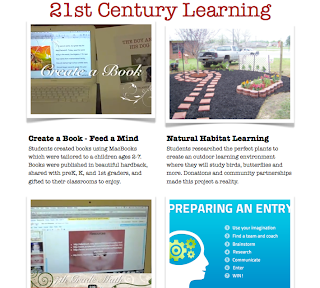Peter wrote:
The Art of Possibility by Rosamund Stone Zander and Benjamin Zander (2000) is a great book to read! I think that having us watch the TED video of Benjamin Zander first was a great idea because it puts much of the book in perspective and gives the book a voice (I couldn’t get that joyful British voice out of my head as I read it). It really is a book of stories on changing perspectives and finding the joy of living in everything. It also asks us to look at a broader world of opportunities, not for what we can gain personally, but what we can gain by giving ourselves to those in our field of influence.
As a teacher the Michelangelo analogy was very strong for me. Do I see my students as infinite potential or am I just there to deliver the curriculum and compare them to other students? It’s a hard thing to rejoice in an individual’s abilities when the parents too are asking how are they doing compared to the rest of the class or the state. This measurement world is very strong and is continually being used as justification and blame on those who do not measure up and those who are charged with the job of raising people up to those invented standards. I have to admit that I myself have been focusing on measurements throughout this course and get stressed at each activity, wondering if I have done what is required to satisfy the course requirements rather than being a contribution to those around me in my academic community, both inside and outside the course.
One thing I can say is that I am quite energized by this book and I hope I can find a way to let myself give up my measurement driven way of thinking to something more uplifting. I’m enjoying this book so much that I am recommending my wife read it to give her tools to help with managing people at her work.
As a teacher the Michelangelo analogy was very strong for me. Do I see my students as infinite potential or am I just there to deliver the curriculum and compare them to other students? It’s a hard thing to rejoice in an individual’s abilities when the parents too are asking how are they doing compared to the rest of the class or the state. This measurement world is very strong and is continually being used as justification and blame on those who do not measure up and those who are charged with the job of raising people up to those invented standards. I have to admit that I myself have been focusing on measurements throughout this course and get stressed at each activity, wondering if I have done what is required to satisfy the course requirements rather than being a contribution to those around me in my academic community, both inside and outside the course.
One thing I can say is that I am quite energized by this book and I hope I can find a way to let myself give up my measurement driven way of thinking to something more uplifting. I’m enjoying this book so much that I am recommending my wife read it to give her tools to help with managing people at her work.
Peter,
I also liked watching the TED video before reading the book. Interesting perspective you have on measurement, I liked how you related it to the teaching profession. As I have gotten to know you this year I find it hard to believe you are just a deliverer of the curriculum. (Look at the President’s song) I believe you will help your students’ to find their infinite potential and chip away any obstacles they may face to reach it.










